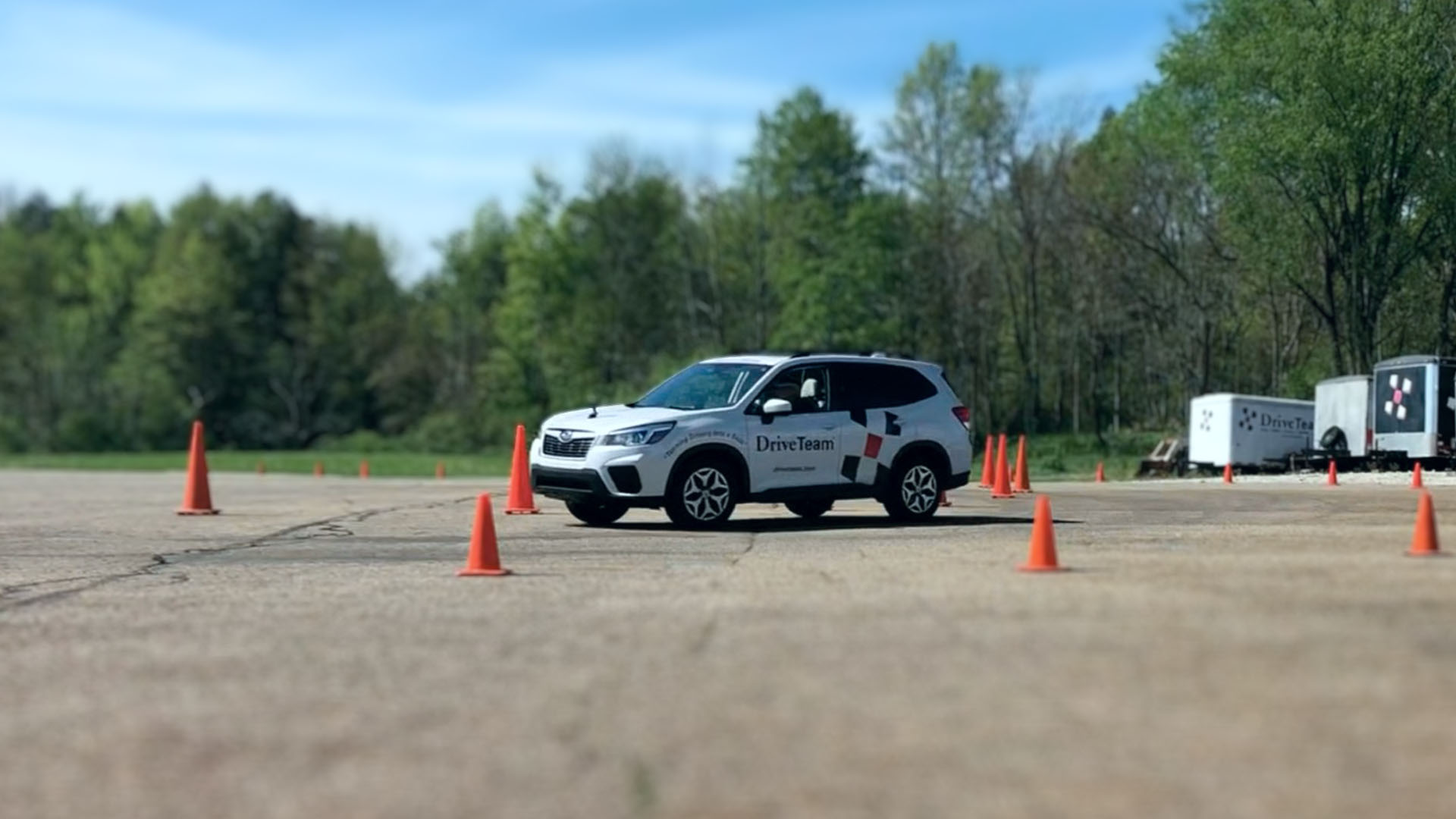Mastering safe driving tips is a crucial aspect of hitting the road.
Many motorists battle to follow appropriate protocols for guaranteeing safety on the roads.
This isn’t just about knowing how to operate your vehicle. It’s also about understanding and applying safe driving tips.
Neglecting these can lead to dire consequences – from minor accidents that could spike up your insurance rates, to major ones that could risk lives.
Table of Contents:
- The Significance of Safe Driving and Defensive Practices
- Essential Safety Tips for All Drivers
- Minimizing Distractions for Safer Driving
- Navigating Weather Conditions for Safe Driving
- Weather Conditions and Safe Driving
- The Importance of Regular Car Maintenance for Safe Driving
- FAQs in Relation to Safe Driving Tips
- Conclusion
The Significance of Safe Driving and Defensive Practices
Operating an automobile responsibly isn’t just about following the regulations; it’s a purposeful promise each driver makes to safeguard themselves and others on the street. This approach significantly lowers car accident rates, thus preserving lives.
A proactive strategy that enhances safe driving practices is defensive driving. Anticipating potential hazards before they happen allows drivers to respond effectively and avoid collisions. Research has demonstrated that defensive driving can reduce the likelihood of car accidents by up to 20%.
Besides saving lives, adopting safe and defensive driving techniques also impacts your financial standing – especially when considering car insurance premiums. Insurance companies tend to offer lower rates for responsible drivers because they pose less risk on roads.
How Safe And Defensive Driving Affects Car Insurance Rates
Your behavior behind the wheel directly influences how much you pay in auto insurance premiums. Insurers take into account various factors, including your track record of either reckless or cautious conduct while operating a vehicle.
Some organizations highlight that individuals completing recognized defensive driving courses might be eligible for reductions on their car insurance premiums. This incentive is crafted to promote safer driving behaviors among drivers of all backgrounds.
This information clearly illustrates the advantages of adopting these best practices — it not only enhances our safety but also leads to financial savings over time. Armed with this knowledge, let’s explore essential safety tips that every driver should know.
Essential Safety Tips for All Drivers
Safety on the road is not an option but a necessity. Regardless of how experienced you are, it’s always wise to refresh your knowledge about essential safety practices.
The Role of Seat Belts in Driving Safety
Let’s start with seat belts – their importance cannot be overstated. The National Highway Traffic Safety Administration (NHTSA) reports that almost 15,000 lives were saved by seat belts in one year alone.
This life-saving device keeps passengers secure during sudden stops or collisions and significantly decreases the risk of accidents and fatal crashes. It’s more than just law enforcement; wearing a seat belt should become second nature every time you get behind the wheel.
Understanding Traffic Signals and Speed Limits
Moving onto traffic signals – they’re there for a reason. These guidelines ensure smooth movement on roads while preventing potential mishaps. Ignoring them can lead to serious consequences like fines or even license suspension depending upon local laws.
Moreover, speed limits aren’t random figures posted on highways — they are determined by factors like pedestrian activity, roadway conditions, and more. Adhering to these limits isn’t just about legal compliance — it’s vital for ensuring order on our roads and preventing accidents.
In today’s world where everyone seems busy multitasking, it may seem tempting at times to use cell phones or eat meals while driving. However, this leads us into another critical aspect: distraction-free driving. Let’s explore this further.
Minimizing Distractions for Safer Driving
The roadways are filled with distractions that can divert a driver’s attention, leading to potential accidents. As We Save Lives, an international advocacy organization, points out:
In essence, focusing solely on operating your vehicle without succumbing to these diversions plays a crucial role in maintaining safety on our roads.
Mitigating Cell Phone Distraction Behind the Wheel
Given their widespread use and accessibility, cell phones have become significant sources of distraction when driving. Whether it’s answering calls or using GPS navigation apps, every interaction diverts focus from safe driving practices.
- To effectively battle this issue, utilizing hands-free gadgets that enable you to work your cell phone without physical contact is essential.
- However, beyond technological aids, discipline is key – prioritizing limiting overall device usage during drives, regardless of any tools at hand.
- Apart from cellular distractions, other activities such as eating or adjusting car controls like air conditioning or radio volume can split attention between multiple tasks, significantly increasing the risk of accidents.
- An effective strategy involves planning ahead before embarking on journeys: pre-setting GPS directions, adjusting mirrors and seat positions, and selecting music playlists beforehand. These measures aim to reduce potential distractions once you hit the road.
Tackling Other Forms of Distracted Driving
Sometimes we overlook simple actions that may pose serious threats when behind the wheel – changing radio stations, reaching for items in the backseat, and more. All of these contribute to distracted driving habits and unsafe conditions.
We must consciously avoid engaging in such behaviors, fully understanding how they impair our ability to concentrate on what’s most important – safely navigating through public roads shared by others, just like us.
Navigating Weather Conditions for Safe Driving
Key Takeaway: Keep your eyes on the road, not on distractions. Minimize mobile device usage while driving and plan ahead to reduce in-car adjustments. Remember, safe driving isn’t just about you – it’s about everyone sharing the road with you.
Weather Conditions and Safe Driving
The impact of weather conditions on road safety is often underestimated. However, it’s crucial to understand how various climatic scenarios can affect your driving techniques.
Drive Team’s Guidance for Weather-Specific Scenarios
Before embarking on any journey, especially a long one, checking the forecasted weather conditions is advised. This allows you to anticipate potential challenges such as heavy rain or snow that could hinder visibility or cause slippery roads. If severe bad weather is predicted, consider postponing your trip until safer conditions prevail.
Beyond this preemptive step, Drive Team also recommends maintaining an emergency kit in your vehicle at all times. The kit should include essentials like a flashlight with extra batteries and blankets for warmth during winter months along with bottled water and non-perishable food items among others.
Navigating Rainy or Snowy Days
Rainy days demand slower speeds due to reduced traction, while snowy ones require increased following distances between vehicles because of possible ice patches. Foggy situations where visibility drops significantly necessitate the use of low beam headlights, which make other drivers aware of your presence without causing glare from high beams bouncing off fog.
Sunrise hours pose a risk too – sun glare temporarily impairs vision when facing directly into sunlight; wearing sunglasses and using visors are effective ways of mitigating risks. In extremely bad weather, such as hurricanes or blizzards leading to flooding or blocked roads respectively, staying informed through local news updates about the current situation becomes vital. Evacuating early when advised by authorities might save lives, as sudden changes in climate can catch you unawares. If you are already en route, finding shelter immediately instead of trying to drive through dangerous circumstances is always the safer choice.
As we dive deeper into safe driving practices, let’s shift our focus onto another key aspect: regular car maintenance.
Don’t underestimate the power of weather on road safety. Check forecasts before trips, pack an emergency kit, and adjust your driving for conditions like rain or snow. In severe situations, heed local news updates and seek shelter if needed.
The Importance of Regular Car Maintenance for Safe Driving
When it comes to safe driving, one cannot overlook the significance of regular car maintenance. A vehicle in optimal condition not only guarantees superior performance but also minimizes the chances of unexpected breakdowns or accidents resulting from mechanical failure.
Maintaining Oil Levels and Quality
One essential aspect of routine car upkeep is checking your oil regularly. The engine’s oil serves multiple functions—it lubricates, cools, cleanses the motor while preventing corrosion. Failing to change your oil can lead to poor engine health or even severe damage over time.
A recommended practice involves inspecting your oil level at least once a month and scheduling an oil change every 3000 miles or three months—whichever arrives first. However, these recommendations may differ depending on the type of vehicle; thus always consult your owner’s manual for exact directions.
Tire Pressure and Tread Depth Matters
Paying attention to tire pressure goes a long way in ensuring better fuel efficiency, improved handling, and extended tire life—all critical aspects when talking about safe driving practices. Bridgestone Tire suggests that tires should be checked monthly with a quality gauge when they are cold as heat generated by driving temporarily increases pressure readings. Moreover, monitoring tread depth, which provides necessary traction for stopping safely under various weather conditions, is equally important.
Servicing Brakes Is Essential
Your brakes are arguably among the most vital safety features within any vehicle, necessitating their regular servicing. Worn-out brake pads could result in decreased stopping power—a major hazard, especially during emergencies requiring quick stops.
To keep them working optimally, it advises having regular brake inspections and replacing brake pads as recommended by the manufacturer. Additionally, being aware of any unusual noises or vibrations while braking and addressing them promptly can prevent potential brake failures.
Don’t skimp on regular car maintenance for safe driving. Keep an eye on oil levels and quality, ensure your tires have the right pressure and tread depth, and never ignore brake servicing. These measures can help prevent accidents due to mechanical failures.
FAQs in Relation to Safe Driving Tips
What are the 3 basic principles of defensive driving?
The three pillars of defensive driving include maintaining focus, anticipating others’ actions, and having a plan to react swiftly.
What are the safe driving tips for employees?
Employees should follow traffic rules, avoid distractions like cell phones, maintain their vehicles regularly, and practice defensive driving techniques.
What are the top 5 mistakes you should avoid when driving?
Avoid speeding, using your phone while behind the wheel, not wearing seat belts, ignoring traffic signals, and poor vehicle maintenance.
What are the six action principles of driving?
The six action principles include scanning effectively for hazards, predicting potential risks, identifying critical situations early, deciding on a safe response, executing maneuvers smoothly, and constantly adjusting to changing conditions.
Conclusion
Understanding the significance of safe driving and defensive practices is key to becoming a responsible driver.
Wearing your seatbelt and heeding traffic regulations are key to making our roads safer for all.
Avoiding distractions while driving is another crucial aspect. Whether it’s putting away your cell phone or refraining from eating at the wheel, every effort counts towards reducing accidents on our roads.
Weather conditions too play a significant role in road safety. Being prepared to navigate through bad weather can help prevent many potential mishaps.
Maintaining your vehicle to ensure it remains reliable on the road is an essential part of safe driving.
If you’re keen on mastering these safe driving tips and more, consider enrolling in DriveTeam’s performance-based training programs. Catered to diverse clients including teenage drivers, police teams, corporations, and seniors alike; we ensure that each participant walks away equipped with essential skills for accident-free journeys. Join us today, because when it comes to road safety – every bit of knowledge matters!
Explore Corporate Driving Programs to Minimize Vehicle Crashes
Please fill out the form below
More From Our Blog
Fall Driving: Why Speed Is Your Worst Enemy on the Road
Fall Driving 2025 Let's cut to the chase: speeding isn't a small risk. It's the number one cause of fatal crashes for people your age, period. Whether you're cruising past the speed limit sign or just driving too fast for the actual road conditions—like rain, slick...
Your RoadCheck 2025 Safety Debrief: Takeaways for Professional Drivers
The results are in from the Commercial Vehicle Safety Alliance's (CVSA) 2025 International Roadcheck, a three-day inspection blitz conducted across the U.S., Canada, and Mexico on May 13-15. This initiative, which involved 56,178 commercial motor vehicle, driver, and...
The Critical Importance of Police Driving Training
How Comprehensive Police Driver Training Enhances Safety and Reduces Risks To date, we have lost seventy-seven police officers nationwide in the line of duty. Tragically, twenty-seven of these deaths involved vehicles. According to the National Law Enforcement...



